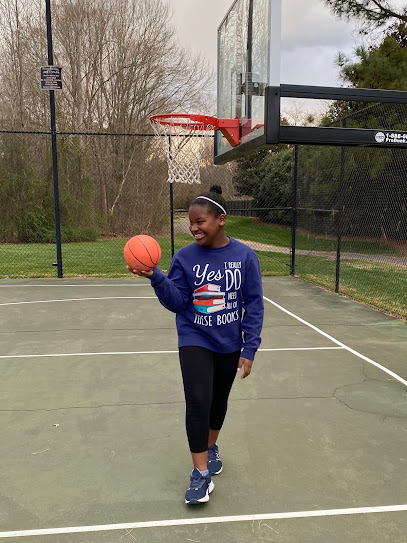The book RAT by Jan Cheripko is an upper middle-grade/young adult novel offering a unique, first-person perspective of Jeremy, a disabled boy in high school. I would recommend this book for readers 11+ who can comprehend the use of mature language, suggestive dialogue, violence, abuse, and swear words.
We start in a courtroom, with Jeremy a witness in a trial, stating what he saw when his basketball coach, Coach Stennard, physically abused a cheerleader, Cassandra Diaz. He explains that the coach was trying to kiss Cassandra and physically disrespect her boundaries.
He explains his passion for basketball, expressing that he’s not too good, but that doesn’t change how he likes the sport. He then tells the judge that his nickname is Rat because his “friends” always call him a gym rat!
Jeremy states that the coach threatened to cut a slit in his throat if he told anyone about what he saw. Jeremy also stated that he saw Cassandra crying, with her blouse ripped.
Jeremy and his “friends” talk about the incident. Jeremy learns that his “friends” are only concerned about getting a new coach and are mad at him for testifying against Coach Stennard. Jeremy thinks about how his injury at birth to his right arm affects his life. He says the reason he’s good at basketball is because he concentrates and doesn’t miss the hoop. In the gym, Simpson bullies Jeremy, and then Josh, another “friend” says, “Leave it alone”.
In a basketball game, Simpson chooses Felipe and Josh, while Mr. O’Connor chooses two girls, Katie and Megan. Jeremy is hurt that he hasn’t been chosen, but he still watches the game. In the end, Mr. O’Connor and the girls win!
For Jeremy, it feels good to see Simpson defeated, but that ends quickly. Jeremy attempts to shoot the basketball in the hoop, but then Simpson steals the ball and pins him down using the basketball. Simpson pushes the basketball into Jeremy’s right arm and into his back. Jeremy wiggles on the floor and the kids laugh at him. I found this part of the story a great visual and a good example of what Jeremy experiences.
Mr. O’Connor, the new basketball coach, tells the team that Jeremy is the new assistant manager. No one responds. Mr. O’Connor gives the team a basketball handbook and discusses the principles with the players.
Once Simpson bullies Jeremy again, Coach O’Connor meets with Jeremy in his office. He talks about honesty and reminds him that honesty is the first principle in the handbook. Jeremy thinks about Coach Stennard and reflects on the terrible experience, then decides to reassess. My favorite character is Mr. O’Connor. I look up to his encouraging, rule-following, and empathetic personality.
Once I started reading this book I couldn’t stop turning the pages! This story guides us through many of Jeremy’s real-life experiences, which we can learn from. Some lessons that stuck out to me were the importance of understanding how to be comfortable in your own skin, and the special perspective of how a relationship with God can be strengthened through trials. In the climax of the story, Jeremy starts to pray to help find his way.
There are multiple plots in this story, which may be hard for some readers to follow along with, but the subplots lead to the adrenaline-pumping and fast-paced novel that it is.
The reader is left asking questions. Will Jeremy get into more trouble with his team? Will Coach Stennard get out of jail? Will Jeremy ever find a real friend?
In conclusion, I would recommend this young adult novel, Rat for ages 11+ or anyone who can process imperfect behavior, violence, and bullying.
Read Brooke's last review of Hidden Truths on my blog here.


















